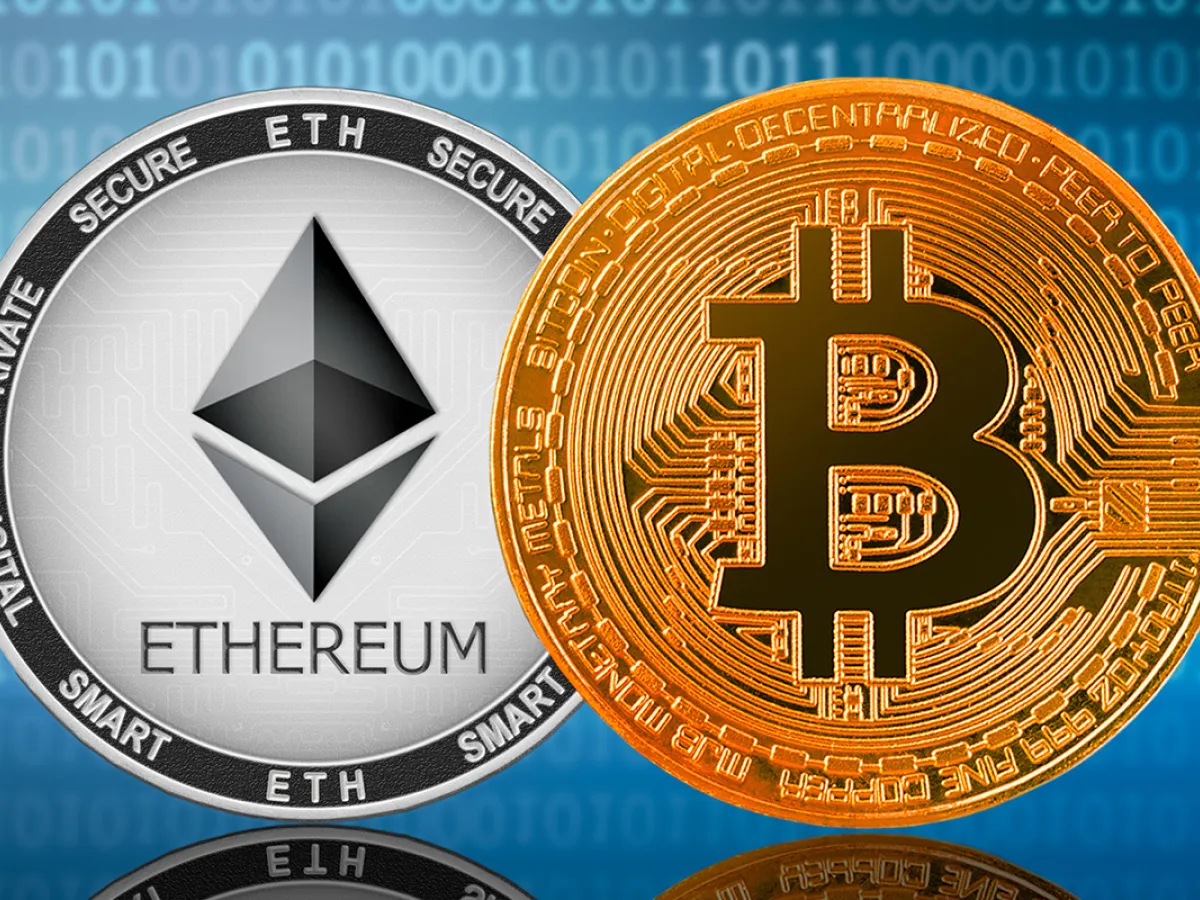In the midst of strategizing, we decide the outcome from a thousand miles away. Hello everyone, I am Lin Chao, a global financial market observer, focusing on cryptocurrency market analysis, bringing you the most in-depth trading information analysis and technical teaching.

Lin Chao continues from yesterday's article to provide a detailed analysis of the causes of the liquidity crisis and the potential subsequent impacts.
The liquidity crisis, also known as a "money shortage," simply means that there is no liquid money in the market. To understand this crisis, we need to pull the timeline back to 2019. We will review the dollar repurchase "money shortage" event in September 2019 and then look at the current market liquidity tension. Recently, the market liquidity tension began to spread due to the rising balance of the Treasury General Account (TGA) caused by the U.S. government shutdown, leading to significant declines in assets sensitive to loose expectations and liquidity, such as the cryptocurrency market and small-cap U.S. stocks.
First, let's discuss the reasons for this liquidity tension:
The excessive bond issuance in August and September depleted the overnight reverse repurchase usage;
Entering October, the government shutdown caused the TGA account funds to remain unspent, leading to a continuous decline in the scale of commercial bank reserves, which fell below $3 trillion, marking a transition from abundance to tension in the market. It is important to clarify that the government shutdown is the most direct factor in this money shortage, not the excessive bond issuance in August and September. In fact, the replenishment of the TGA was completed by mid-September. It can be said that the excessive bond issuance that depleted the overnight reverse repurchase was merely a necessary condition (the root cause), while the government shutdown was the direct trigger. If the government had not shut down, this liquidity tension might not have occurred.

To understand what will happen in the financial markets subsequently, it is necessary to review the previous round of money shortages triggered by the Federal Reserve's tapering in September 2019. In financial markets, history may not repeat itself, but it often rhymes.
The money shortage in 2019 can be traced back to the Federal Reserve's previous round of balance sheet reduction, QT-I, which began in October 2017. The current round of tapering from 2022 to now is QT-II.
QT-I (October 2017 to August 2019) lasted for 22 months, gradually reducing the monthly reinvestment amounts of Treasury bonds, agency bonds, and MBS, mainly divided into three phases: The first phase (October 2017 - September 2018) saw a gradual increase in the tapering scale, with the initial reduction amount for U.S. Treasury reinvestment set at $6 billion, increasing by $6 billion quarterly within a year until reaching $30 billion per month; the initial reduction amount for agency bonds and MBS was set at $4 billion, also increasing by $4 billion quarterly until reaching $20 billion per month. The second phase (October 2018 - April 2019) maintained the above tapering scale. The third phase (May 2019 - August 2019) began to slow down the tapering, maintaining a scale of $20 billion per month for agency bonds and MBS, but halving the monthly reduction scale for Treasury bonds from $30 billion to $15 billion, terminating the tapering by the end of August. As a result, during QT-I, the Federal Reserve's balance sheet shrank from $4.4 trillion in October 2017 to $3.7 trillion in September 2019, and bank reserves also decreased from $2.3 trillion to $1.4 trillion, achieving to some extent the original intention of normalizing the Fed's balance sheet. However, as reserves continued to decline, dollar liquidity became increasingly tight: the overnight repurchase rate SOFR began to exceed the EFFR and increasingly frequently broke through the IOER, eventually breaking through the IOER at the end of March 2019, and continued to rise with SOFR until mid-September 2019, breaking through the upper limit of the federal funds rate range, resulting in a "money shortage."
2) The timeline of the September 2019 money shortage: September 13 (Friday): The repurchase market rates began to fluctuate slightly, with SOFR at 2.30% and EFFR (effective federal funds rate) at 2.14%. The reserve level had dropped to about $1.4 trillion (the lowest since 2011);

When the money shortage impact occurred in late September 2019, the S&P and Nasdaq in the U.S. stock market fell by about 6 points, but it did not trigger a severe panic sell-off. This was mainly due to the Federal Reserve's rapid intervention, with the market viewing it as a short-term liquidity issue rather than a systemic risk.
Looking back at the 2019 money shortage event, the excessive issuance of Treasury bonds combined with continuous tapering was the root cause, while the short-term massive issuance of Treasury bonds (after the debt ceiling was suspended in early August 2019, the U.S. Treasury quickly began to rebuild its TGA account, resulting in a net increase of $520 billion in public debt over the following two months) and the end-of-quarter corporate tax payments were the most direct triggers of the money shortage at that time. The Federal Reserve then helped the market through this liquidity shock by restarting balance sheet expansion and repurchases.

Lin Chao summarizes:
Looking at the current market liquidity tension, as discussed earlier, the excessive bond issuance in August and September completely depleted the overnight reverse repurchase usage, leaving no buffer for liquidity; in this situation, continuous tapering and the declining scale of bank reserves put pressure on liquidity; in October, the U.S. government shutdown caused the TGA account balance to rise rather than fall, continuously increasing to over $1 trillion (the TGA balance was $300 billion in July), which is equivalent to directly siphoning money from the market; the Federal Reserve is still continuing to taper, with the original plan to completely stop tapering by December 1, but some analyses suggest that this stopping time is a bit late and should have started on November 1. On October 17, the credit issues of two local banks exposed panic, marking the first signal of recent liquidity tension. In the latter half of last week, many indicators of liquidity began to show warning signs, with the secured overnight financing rate (SOFR) soaring 18 basis points to 4.22% on October 31. Logically, considering that the Federal Reserve had lowered interest rates again last week, this rate should have remained around 4.00%.
Last Friday, the usage of the Federal Reserve's main liquidity support tool—the Standing Repo Facility (SRF)—hit a record $50.35 billion, mainly driven by month-end factors (some institutions reduce lending and related businesses). Logically, demand for the SRF should have decreased on Monday, but the decline was far below the level that should be expected for the normalization of the repurchase market. On Monday, the Federal Reserve lent a total of $22 billion to eligible financial institutions through the standing repo tool, which, although lower than last Friday's abnormal peak, still set the second-highest record since the permanent establishment of the standing repo mechanism. The spread between SOFR and the effective federal funds rate has also continued to widen, indicating that market liquidity remains tight.

What are the differences between this liquidity tension and the money shortage in 2019?
Compared to the 2019 money shortage event, the most direct factor this time is the government shutdown leading to a bottleneck in the TGA account, with the TGA account balance exceeding $1 trillion. Dollar liquidity = bank reserve scale + cash in circulation = Federal Reserve balance sheet - onrrp overnight reverse repurchase - Treasury TGA account. The current situation is that the Federal Reserve's balance sheet continues to decrease, the usage of overnight reverse repurchase is negligible, and the TGA account continues to rise. Normally, Treasury spending translates into deposits for the government, businesses, and households in banks, essentially increasing the scale of bank reserves. If bank reserves increase, the liquidity tension can be greatly alleviated.

Impact on the market
As previously discussed, the assets that benefit from loose expectations and are sensitive to liquidity are most affected, namely the cryptocurrency market. The current liquidity tension is indeed occurring, which is why we see a comprehensive decline in the cryptocurrency market, and the extent of the decline is much greater than in other financial markets. The current situation makes it difficult to see any improvement before the liquidity tension eases. Lin Chao has also mentioned that moving forward, the cryptocurrency market will serve as a liquidity reservoir for the U.S. stock market, so for fundamentally strong assets like U.S. stocks, the impact is limited but still present. The key is how soon the U.S. government ends the shutdown; the sooner it ends, the smaller the impact on the market, and the longer it takes, the worse it will be for the market. If liquidity tension continues, all risk assets will naturally be under pressure.

Many fans have privately messaged me asking about the future of the cryptocurrency market.
As mentioned earlier, we need to look at three aspects:
When will the U.S. government return to normal? Once the government returns to normal, the Treasury can start spending, and the bottlenecked TGA account can begin to release funds;
The Federal Reserve officially stops tapering in early December. Stopping tapering does not mean that it will be understood as expanding the balance sheet, but not continuing to decrease the balance sheet can alleviate liquidity tension. After the government returns to normal, economic data can be published normally, and whether the CPI for October and November can continue to be lower than expected like the September data. The trend of inflation will be the decisive factor for whether interest rates can continue to be lowered in December.
The spread of market liquidity tension will also pressure both parties in Congress, which should prompt them to move from a previous deadlock to finding common ground. The key here is Trump's attitude; in October, he was not communicating with the Democrats at all, but recently he has clearly started to speed up his actions.
We also need to watch the Federal Reserve's actions, whether it will end tapering early, or even restart balance sheet expansion shortly after stopping tapering, similar to what happened during the 2019 money shortage event.
For those who have read this article, you should have some financial logic. Lin Chao does not want to be just a "feeding" blogger; teaching someone to fish is better than just giving them fish. This has always been my philosophy. Therefore, when real-time events occur, I prefer to thoroughly break down the overall structure for everyone. I believe that in the long run, this will be helpful to everyone. I also welcome everyone to comment and share, to help those who also need assistance. If you have specific questions, feel free to message Lin Chao.

The success of investment depends not only on choosing good targets but also on when to buy and sell. Preserving capital and making good asset allocation is essential for steady progress in the ocean of investment. Life is like a long river flowing into the sea; what determines victory or defeat is never the gains and losses of a single pass or a moment, but rather planning before action and knowing when to stop to gain. The global market is ever-changing, and the world is a whole. Follow Lin Chao to gain a top-tier global financial perspective.
This article is merely a personal opinion and does not constitute any trading advice. The cryptocurrency market has risks; please invest cautiously!

For real-time consultation, feel free to follow the public account: Lin Chao on Cryptocurrency.
免责声明:本文章仅代表作者个人观点,不代表本平台的立场和观点。本文章仅供信息分享,不构成对任何人的任何投资建议。用户与作者之间的任何争议,与本平台无关。如网页中刊载的文章或图片涉及侵权,请提供相关的权利证明和身份证明发送邮件到support@aicoin.com,本平台相关工作人员将会进行核查。




